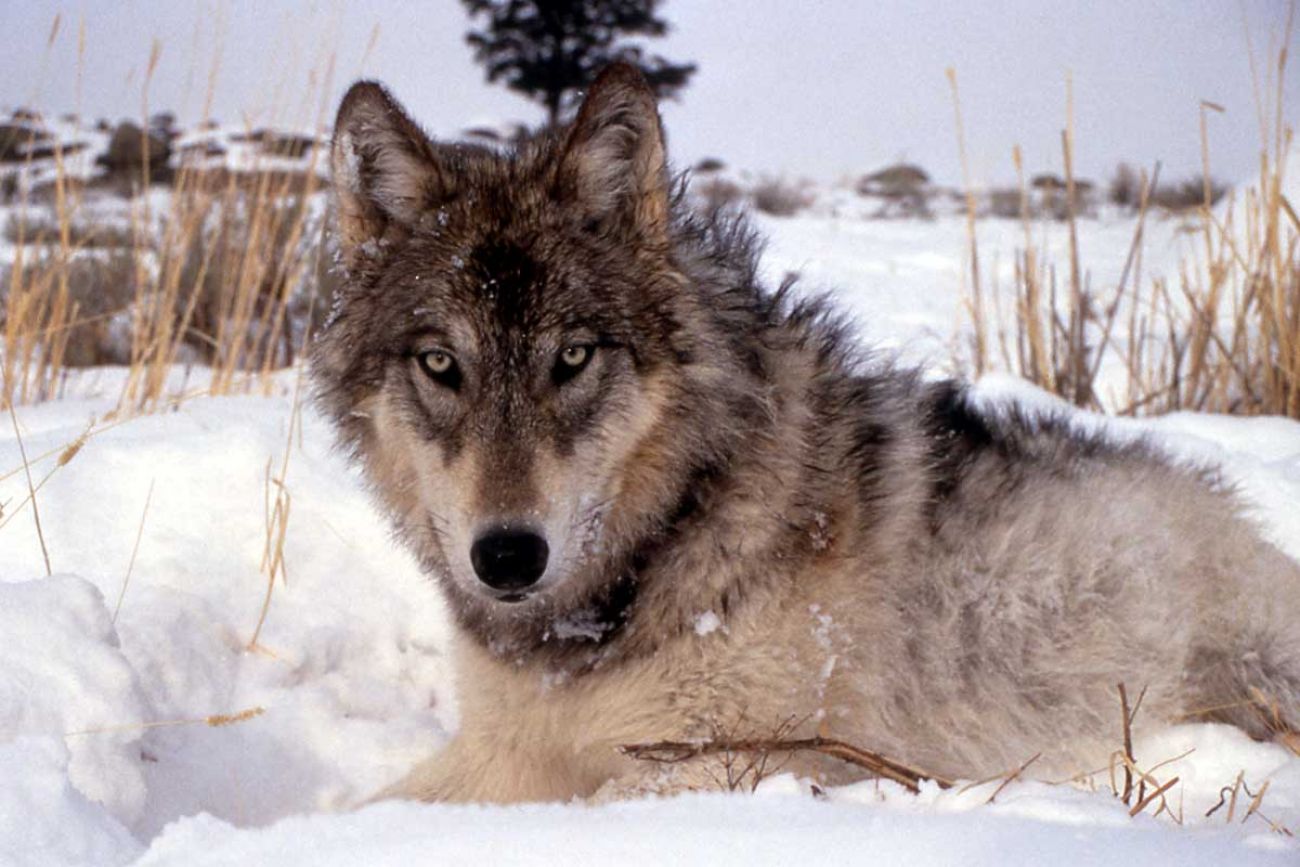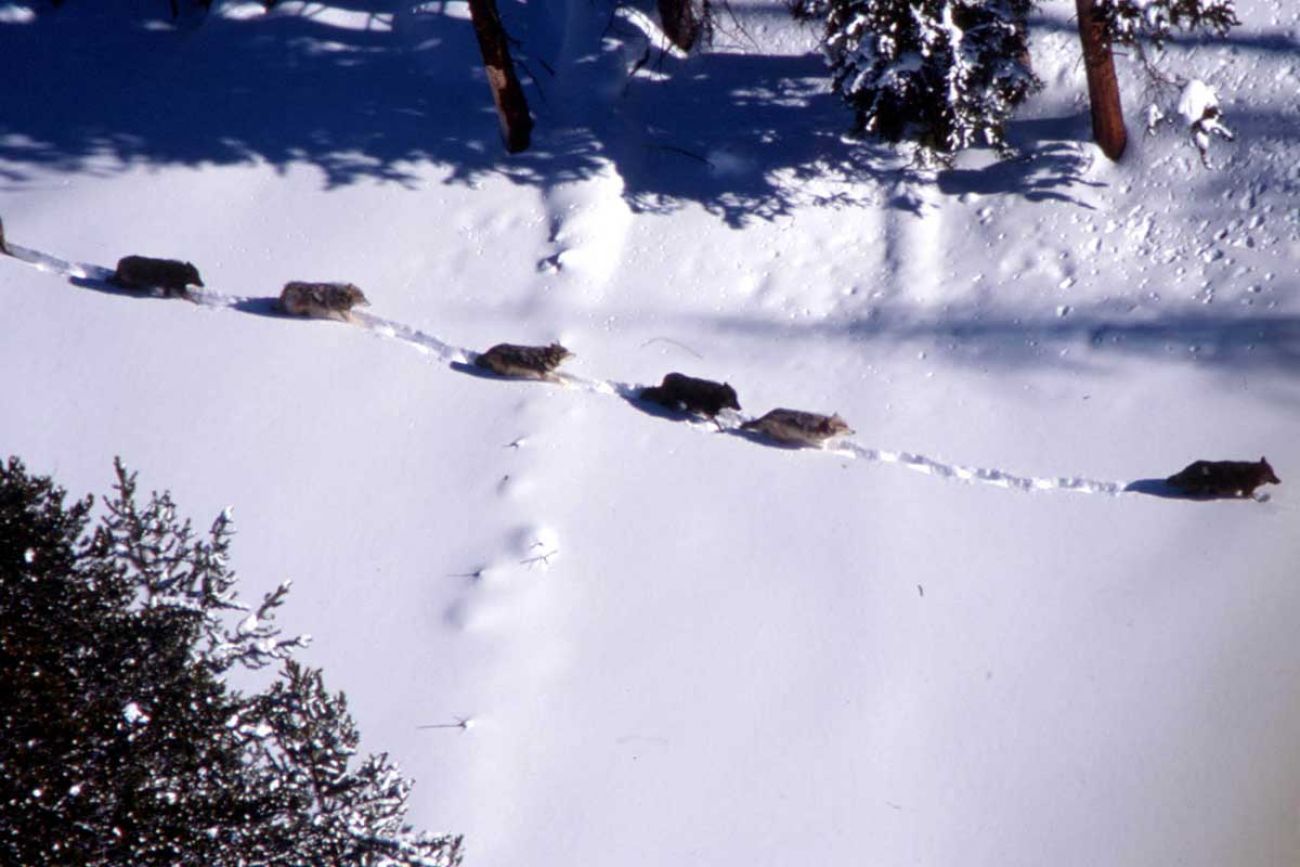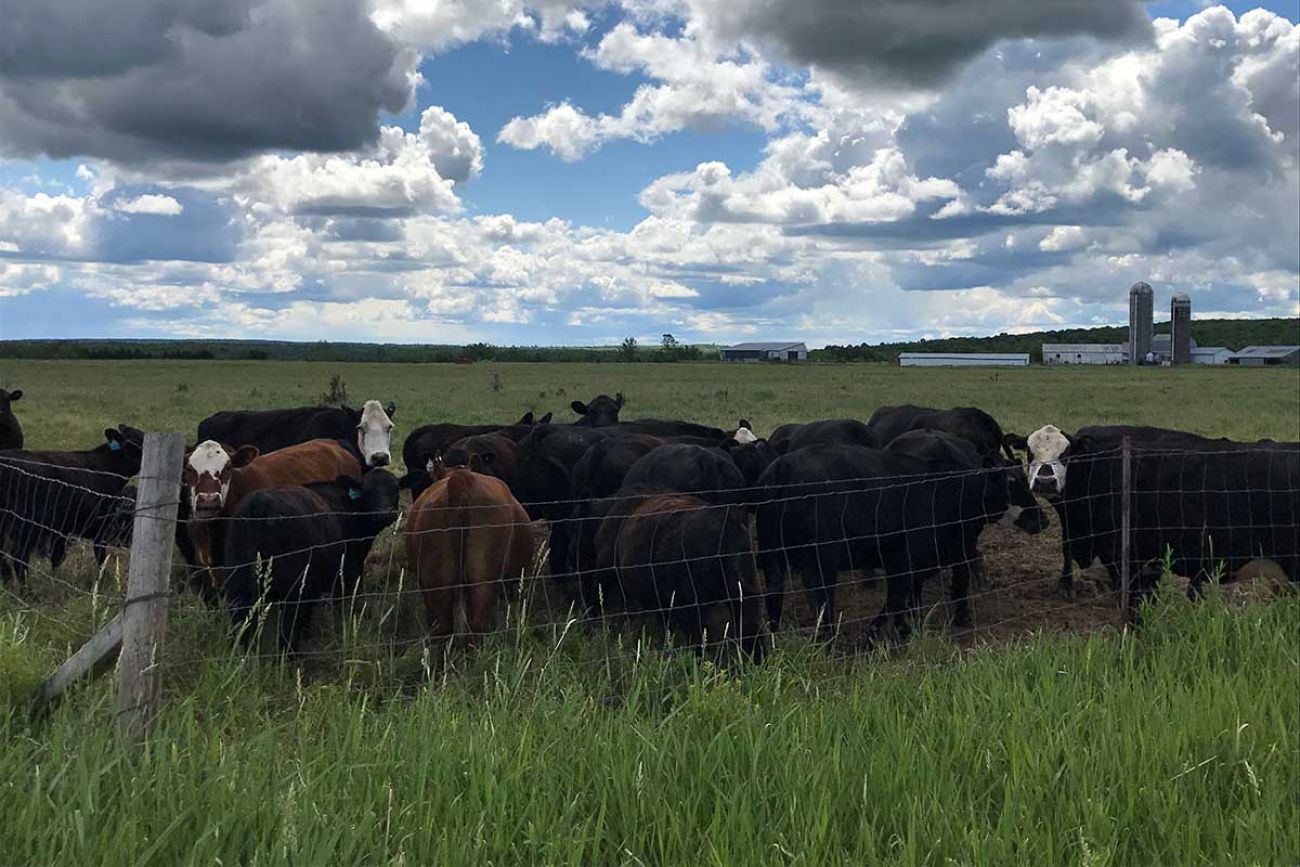Wolf wars: As Michigan packs grow, a battle brews over killing the predators

EWEN—Nancy Warren had never thought much about wolves, until a newspaper article in the early 1990s about Michigan’s then-tiny population captured her attention.
Subsequent research into the apex predators — their pack hierarchy, the way they recognize each others’ howls, the “trophic cascade” they trigger in the surrounding environment — drew her into a decades-long mission to advocate for their survival.
“People hate them for reasons that just aren’t true,” Warren said as she sat at the kitchen table in her western Upper Peninsula home, surrounded by wolf art and memorabilia. Warren, executive director the National Wolfwatcher Coalition, attributes the prejudice to “a deeply-ingrained fear.”

Two-hundred-and-fifty miles across the peninsula in Rudyard, Eric Wallis views the animals with suspicion. Like Warren, the fourth-generation U.P. farmer once paid little attention to the area’s wolf population, he said, until lambs started to go missing from his pastures.
Related:
- Michigan hunters say wolves lowering deer numbers in U.P. Experts say no.
- Michigan Senate passes bill to create a Yoopers-only wolf council
- Lawsuit: Michigan wolf advisory group stacked with hunting advocates
- Gray wolves, now off endangered list, may be targeted by Michigan farmers
- Should Michigan hunt wolves, cranes, moose? Republican lawmakers think so.
Though wildlife officials who have inspected carcasses on Wallis’ property have ruled out wolves as the culprit in those instances, Wallis said he believes wolves are responsible for dozens of missing animals each year from his flock of about 400 adult sheep and 700 lambs. With no carcass, he said, there was nothing to inspect.
“There is no other predator of that size or capability around here,” he said, noting wolves are the only animal he has seen jump the electric fence surrounding his pasture. When that happens, Wallis believes he should have a right to shoot them.
“I just want permission to deal with a problem,” he said.

The two U.P. residents stand on opposing sides of an ongoing debate: With gray wolves newly removed from the federal endangered species list, how should Michigan manage the roughly 700 wolves now roaming the Upper Peninsula?
When, and under what circumstances, should livestock owners like Wallis be able to shoot a wolf on their property? Should hunters and trappers be allowed to kill wolves for fun? And when state officials decide these things, whose values should take precedence?
While the governor-appointed Michigan Natural Resources Council prepares to decide whether to allow wolf hunting in Michigan, advocates and foes of the iconic and deeply divisive canid are locked in a struggle for influence over the next era of Michigan’s wolf management program.
A controversial comeback
As perhaps Michigan’s most politically-polarized species, wolves are viewed differently by different groups, though studies suggest most Americans view them favorably.
To Anishinaabe tribes of the Great Lakes region, they’re Ma’iingan, a brother species whose fate is tied to that of their human relatives. To livestock farmers, they’re a business liability. Hunters often see them as competition for deer and other game. Environmentalists value them as a keystone predator whose presence is a litmus test for the landscape’s overall health.
On Isle Royale, for example, wolves prey on moose, affecting the size and behavior of the island’s herd. That, in turn, influences how aggressively moose browse the island’s forests. Too few wolves could mean too much browsing, ultimately destroying the forest and leaving the moose with too little food. Concern about such an ecosystem imbalance prompted the National Parks Service in 2018 to begin importing wolves onto the island.
Wolves once wandered all of the region now known as Michigan, numbering as high as two million across North America. But European settlers began to exterminate them, and government bounties and trapping programs sped up the process. Wolves were erased from the Lower Peninsula by 1935, and had virtually disappeared from the U.P. by 1960.
They remained all-but-absent from Michigan until the 1980s, when they began to migrate from Minnesota and Wisconsin. Since then, their numbers have steadily increased to some 700 today — all of them north of the Mackinac Bridge.
As their population in the U.P. and across the country has grown, advocates and foes have repeatedly battled over just how many wolves is enough.

The species’ federal legal status has changed six times since 2008, creating brief windows in which it was legal to kill them and triggering bitter political battles in Michigan. During one such window in 2013, Michigan hunters killed 23 wolves.
With federal protections now dissolved, Michigan is again weighing whether to have a hunt.
Under current rules, it’s illegal to kill wolves unless they are caught in the act of killing or wounding livestock or dogs (killing wolves is also allowed in defense of human life, although there has never been a documented wolf attack on a human in Michigan). But a vote of the state Natural Resources Commission, a politically-appointed body that includes three Republicans, three Democrats and one independent, is all that’s needed to establish a hunt.
Commissioners have signaled plans to take up the matter in the coming months.
Too few Yoopers, or too many wolf foes?
State wildlife managers in the Department of Natural Resources say the decision on whether to hunt wolves should come only after the state updates its wolf management plan. The lengthy document has no regulatory teeth, but it is seen as a key tool to help DNR staff and commissioners decide how Michigan should treat wolves, and whether to hunt them.
Wolf advocates and foes are eager to make sure their side is well-represented on the advisory body that will help shape the plan. Immediately after the DNR in March made appointments to a six-member Wolf Management Advisory Council, protests arose on all sides.
Wolf advocates sued the agency, accusing it of stacking the deck in favor of a wolf hunt by appointing wolf hunting proponents to seats reserved for conservation and farming interests.
Native American leaders criticized the DNR's decision to appoint a Wisconsin resident to a seat reserved for tribal government.
And Upper Peninsula hunting advocates blasted the agency for including only one Yooper on the council. They earned sympathy from Sen. Ed McBroom, R-Vulcan, who introduced a bill that would require the DNR to appoint only Yoopers to the group. That bill has cleared the Senate and is awaiting consideration in the House.
If downstate residents want a stake in the fate of a species found only in the Upper Peninsula, McBroom said at the time, "we'd be happy" to consider moving some wolves below the bridge.
That triggered a response from downstate Democratic representatives Bill Sowerby and Abraham Aiyash, who co-sponsored a bill to expand the wolf committee, adding seats for a scientist and environmentalist, while requiring that the tribal seat go to someone from a Michigan tribal government.
“If the structure (of the committee) is set up where it's an echo chamber, or it's a one-sided perspective, it just is not going to result in anything that is for the betterment of Michigan,” Aiyash told Bridge Michigan.
Is killing necessary, or will donkeys do the trick?
Adrian Treves, an environmental studies professor and founder of the Carnivore Coexistence Lab at the University of Wisconsin-Madison, said the animals are emblematic of a clash between two schools of thought: The “utilitarians” who believe humans should manage the environment for our own use, and the “mutualists,” who view humans a “fellow travelers” with no special dominion over the environment.
“Those two value systems fundamentally clash,” he said, making an animal that shares humans’ appetite for venison and beef inherently controversial.
Republican-Democrat and rural-urban political divides add fuel to the dispute.
Michigan voters in 2014 rejected two legislatively-enacted laws that paved the way for the 2013 wolf hunting season, but voters in all but one U.P. county supported both laws.
Wallis, the Rudyard sheep farmer, said part of his support for lethal wolf control comes from a sense that those who favor protecting wolves are primarily downstaters who “sit in office buildings and watch YouTube videos,” and don’t live alongside wolves.
“They’re not experiencing the hardships of what we do daily,” Wallis said. “I’m back to, ‘leave us alone.’”
But Yooper views on wolves are not monolithic.
The leaders of all 12 Michigan tribes, five of which are based in the U.P., have spoken out against killing wolves. Warren, one of Michigan’s most vocal wolf advocates, has lived in the Upper Peninsula for decades. And Cliff Lindberg, who raises cattle on a farm near Bruce’s Crossing in the western U.P, said he has found it unnecessary to protect his livestock by killing wolves.
Two guard donkeys Lindberg got after a spate of cattle kills in the early 2010s have kept predators at bay.

“Donkeys don’t like canines,” he said, and when they sense one is nearby, they alert the cattle and scare the wolves away. “Ever since we’ve had them, we’ve never had a problem.”
Lindberg sees no reason why other U.P. livestock owners couldn’t benefit from similar measures to protect their herds. But he suspects deeply-entrenched political views make many unwilling to try.
At last count, more than 6,000 wolves roamed the lower 48 states — nearly half of them in Minnesota. Policies on killing wolves vary widely from state to state. They’re often more restrictive in left-leaning states and laxer in right-leaning states.
In Oregon and Washington, for example, state wildlife managers will only consider killing a wolf for eating livestock if the livestock owner has first tried other tactics to deter wolves. In Montana, by contrast, new laws passed since the federal delisting have made it far easier to kill wolves.
Protect the wolves, or the cattle and deer?
That political divide is why wolf advocates and foes see the makeup of the wolf management advisory committee as crucial. More Yoopers, hunters and farmers likely translates into a committee more likely to favor policies that make it easier to kill wolves.

Representation from downstaters, wolf advocates, tribes and scientists likely does the opposite.
Gary Gorniak is in the pro-hunting camp. Gorniak, president of Straits Area Sportsmen's Club and vice president of The Upper Peninsula Sportsmen’s Alliance, said he is not “anti-wolf” but rather “pro-wolf management.”
Deer herds in the U.P. have declined in recent years — a trend that helps forests recover from overbrowsing, may reduce the odds of vehicle collisions and cut down on crop losses on farms, but makes it significantly harder for hunters like Gorniak to find game.
In a region of the state where hunting is so popular, many schools cancel classes on the opening day of deer season, that’s a big deal.
Gorniak insists wolves share a big part of the blame for deer decline, though state wildlife biologist Brian Roell said winter weather has a far greater impact on deer abundance.
State data also suggests wolf attacks on domesticated animals are rare. Last year, the DNR recorded just six instances of confirmed livestock kills, and five instances of dog kills. Wallis contends the number is higher, but many killings go unreported.
Unconvinced, Gorniak is pushing for a policy that would reduce Michigan’s wolf population to a maximum of 400.
“We feel that that's a number that everything can live in harmony,” Gorniak said.
Warren, the wolf advocate, supports lethal control of wolves that kill livestock, but only if the livestock owner has attempted non-lethal measures.
As for a recreational hunt?
“Not at this point, not with the numbers so low,” she said. Warren said she believes the state should place no upper limit on the number of wolves in the U.P., instead allowing Mother Nature to naturally cap population growth.
Estimates of so-called “carrying capacity” vary widely. The state’s wolf plan estimates that the Upper Peninsula has enough habitat and prey to support as many as 1,350 wolves.
But with past experience in mind, Roger LaBine is already strategizing what he’ll do if the pro-hunting side prevails.

An enrolled member of the Lac Vieux Desert Band of Lake Superior Chippewa Indians who works in the tribe’s environment department, LaBine said tribes with treaty-protected rights to hunt in the U.P. will likely push for a share of the wolf harvest, and then opt not to hunt.
LaBine is also pushing for greater tribal representation on the wolf advisory council.
As sovereign governments with treaty-protected rights to wildlife, he said, “tribes should be co-creating (Michigan’s wolf policy) from the beginning. It shouldn’t just be drafted in the halls of Lansing.”
Both sides of Michigan’s wolf debate accuse the other of injecting politics into a matter best settled by science.
Wallis accuses those on the political left of angling to turn the U.P. into “a big national park.” Warren, meanwhile, calls unsubstantiated stories of missing livestock and decimated deer herds “tall tales,” meant to justify “killing for fun.”
While Michigan interest groups duke it out at the state level, it’s unclear whether the latest federal delisting will stick.
The Biden administration is reviewing the Trump-era decision, and environmental advocacy groups have sued in hopes of reinstating Endangered Species Act protections.
Roell, the state wildlife biologist, said in addition to updating the wolf management plan before considering a wolf hunt, DNR staff want more clarity on whether the federal delisting will remain in place, and more time to consult Michigan Native American tribes.
All of those steps add up to a potentially lengthy timeline to settle Michigan’s wolf debate: The wolf management plan update alone is expected to take until next June.
Michigan Environment Watch
Michigan Environment Watch examines how public policy, industry, and other factors interact with the state’s trove of natural resources.
- See full coverage
- Subscribe
- Share tips and questions with Bridge environment reporter Kelly House
Michigan Environment Watch is made possible by generous financial support from:
Our generous Environment Watch underwriters encourage Bridge Michigan readers to also support civic journalism by becoming Bridge members. Please consider joining today.
See what new members are saying about why they donated to Bridge Michigan:
- “In order for this information to be accurate and unbiased it must be underwritten by its readers, not by special interests.” - Larry S.
- “Not many other media sources report on the topics Bridge does.” - Susan B.
- “Your journalism is outstanding and rare these days.” - Mark S.
If you want to ensure the future of nonpartisan, nonprofit Michigan journalism, please become a member today. You, too, will be asked why you donated and maybe we'll feature your quote next time!






